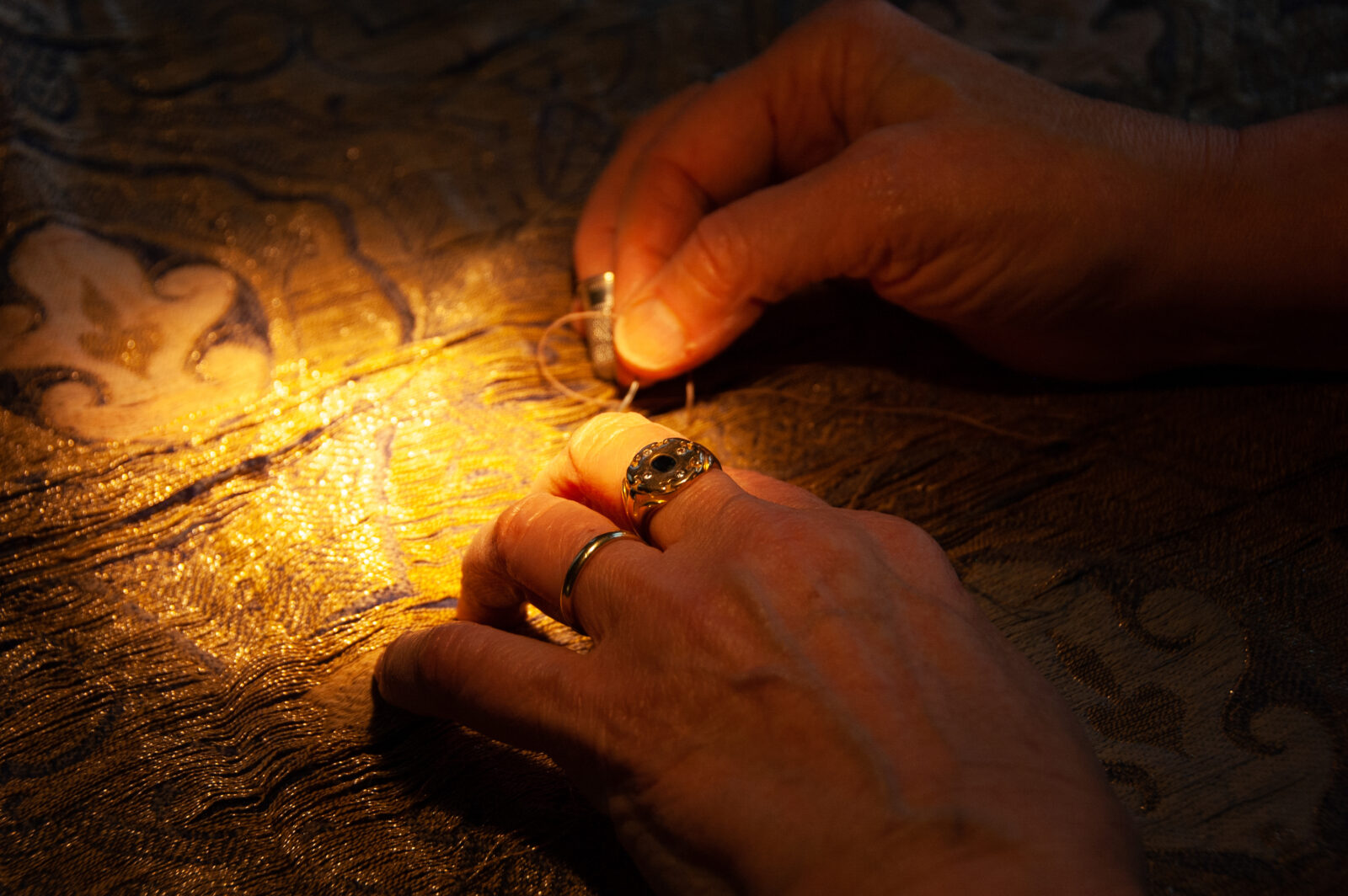


Conservators seem to strive to make every artwork last forever. Yet the Buddhist tenet of impermanence bears closely and profoundly on our field, as we work to preserve art that is both sacred in character and fundamentally fragile in nature.
I work with the preservation of thangka, which in its traditional form is a picture panel surrounded by a textile mounting. Used as meditation guides, thangka depict religious imagery such as buddhas, bodhisattvas, and mandalas, the elaborate palaces where these figures reside. Traditional thangka are complex and three dimensional; the central picture may be painted, woven, or printed, and its textile surroundings can contain textile, wood, leather, and metal.
This centuries-old art form has changed over long periods of geographical and cultural migration, and it continues to change rapidly as contemporary artists no longer have access to traditional materials and incorporate digital technology. The discipline of conservation has also changed with the increased use of sophisticated analytical and digital tools. As a conservator, I endeavor to recover and preserve the original art form, while also striving to facilitate its evolution to a virtual form that can be accessed by current and future generations.
To have one foot in original tradition and the other in contemporary science, to feel allegiance to the monastery and the museum, poses a challenge, in part because many conservators—myself included—want to do their work perfectly, especially when working with Buddhist treasures.
I asked Mingyur Rinpoche, an eminent teacher with knowledge of both older traditions and newer cultures, for counsel on finding a balance between the conservation of thangka paintings and their impermanence. He said:
It is good to preserve thangka, and one should try one’s best to do so. However, results will vary, for sometimes things will turn out well and sometimes they will not. Moreover, in the end all things are indeed impermanent. One simply has to accept reality, even as one does something one hopes will be beneficial.
Some people lean toward eternalism, wanting everything to last forever—it may be that many conservators land here. Others fall to the opposite extreme: nihilism. The nihilists ask why we preserve anything. After all, impermanence makes a mockery of such efforts. But conservators are not trying to make things last forever for the sake of it. Rather we hope to preserve sacred treasures for future generations. We want them to have the opportunity to encounter and be nourished by these remarkable works of art that convey and perhaps even embody the sacred dimensions of our lives.
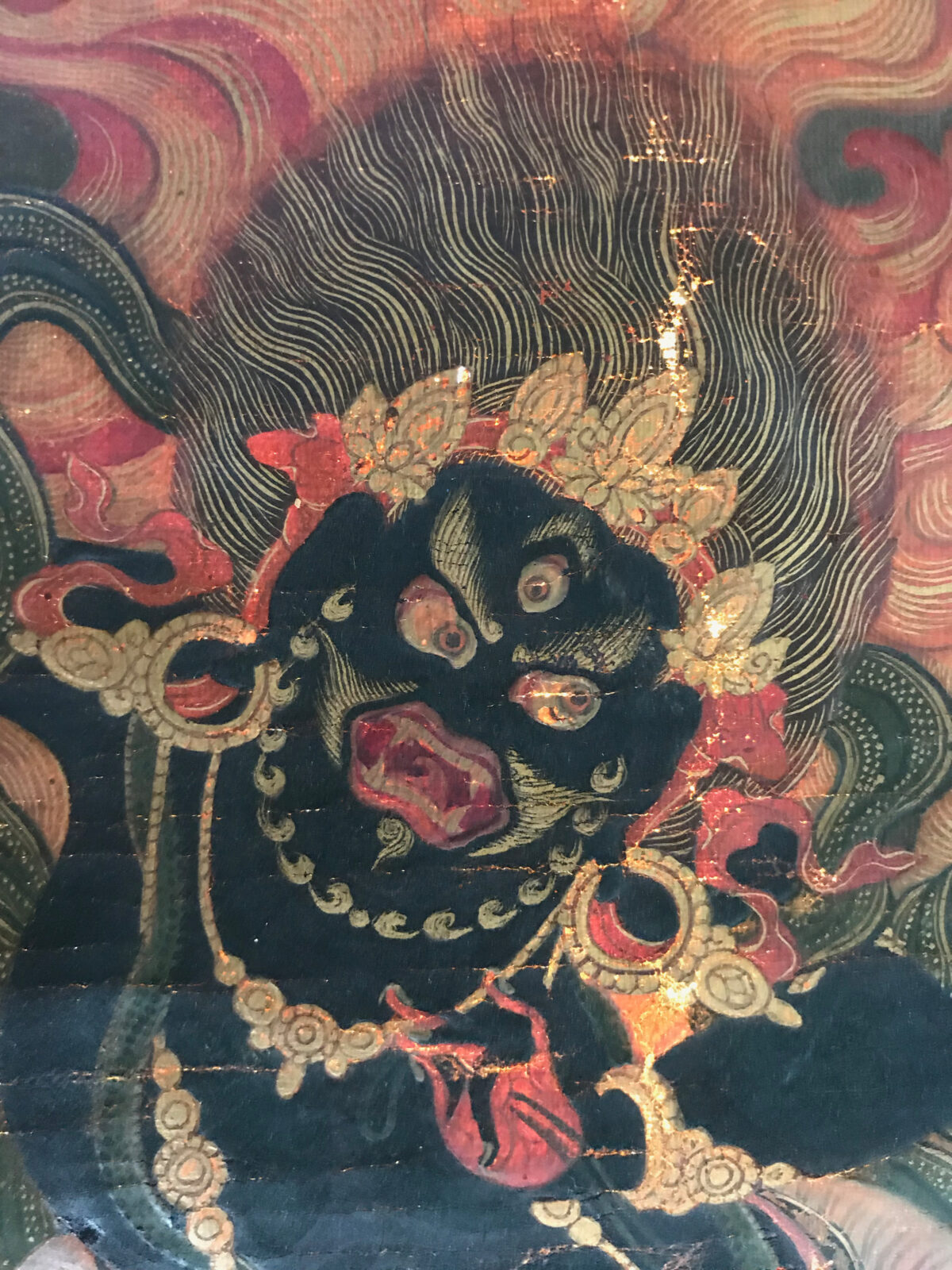
Thangka from the Sven Hedin Silk Road Collection of the Museum of Far Eastern Antiquities, Världskulturmuseerna, Stockholm, Sweden, under normal light. I use light of different wavelengths and placements to reveal the condition of a thangka and document its condition with digital images.
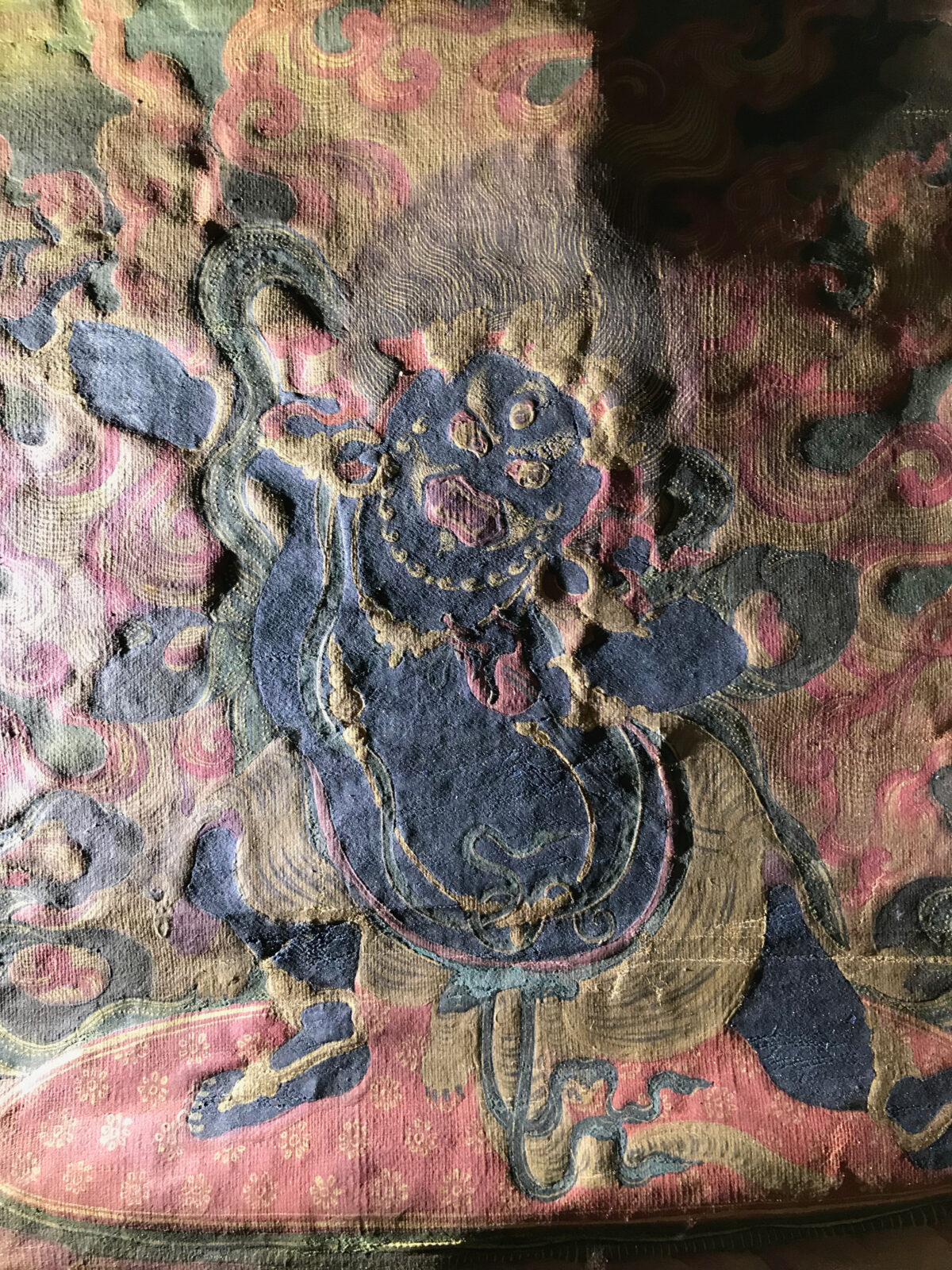
Raking light (light beamed at a low angle to the surface of the artwork) reveals the use of hand-ground pigments of different particle sizes, according to color and mineral origin. The cotton cloth support is creased and damaged due to rolling and unrolling and being rolled in storage. The ground and paint layers powder over areas of damage to the support, and losses and insecurity are visible.
Conservators must do their best to understand the intent of artists, whether painters and workshops of the past or contemporary artists. Since 1970 I have researched and documented changes in traditional Buddhist art forms. I have interviewed and learned from master painters who are both respected Buddhist teachers and lineage holders. Such artists—a category that includes several of the Karmapa lamas and the Eighth Khamtrul Rinpoche (1931–1980)—create a specific, unusual kind of thangka. They hope their artwork will survive in order to inspire future generations on the path of meditation and compassion.
Keeping this intent in mind, the conservator can then ask: How much treatment would the artist regard as appropriate? This allows the conservator to be guided by the artist rather than imposing technology and priorities alien to the artist’s intent. This is particularly important when a Buddhist master creates an image representing a visionary experience with the intent of conveying that experience to contemporary students and those not yet born.
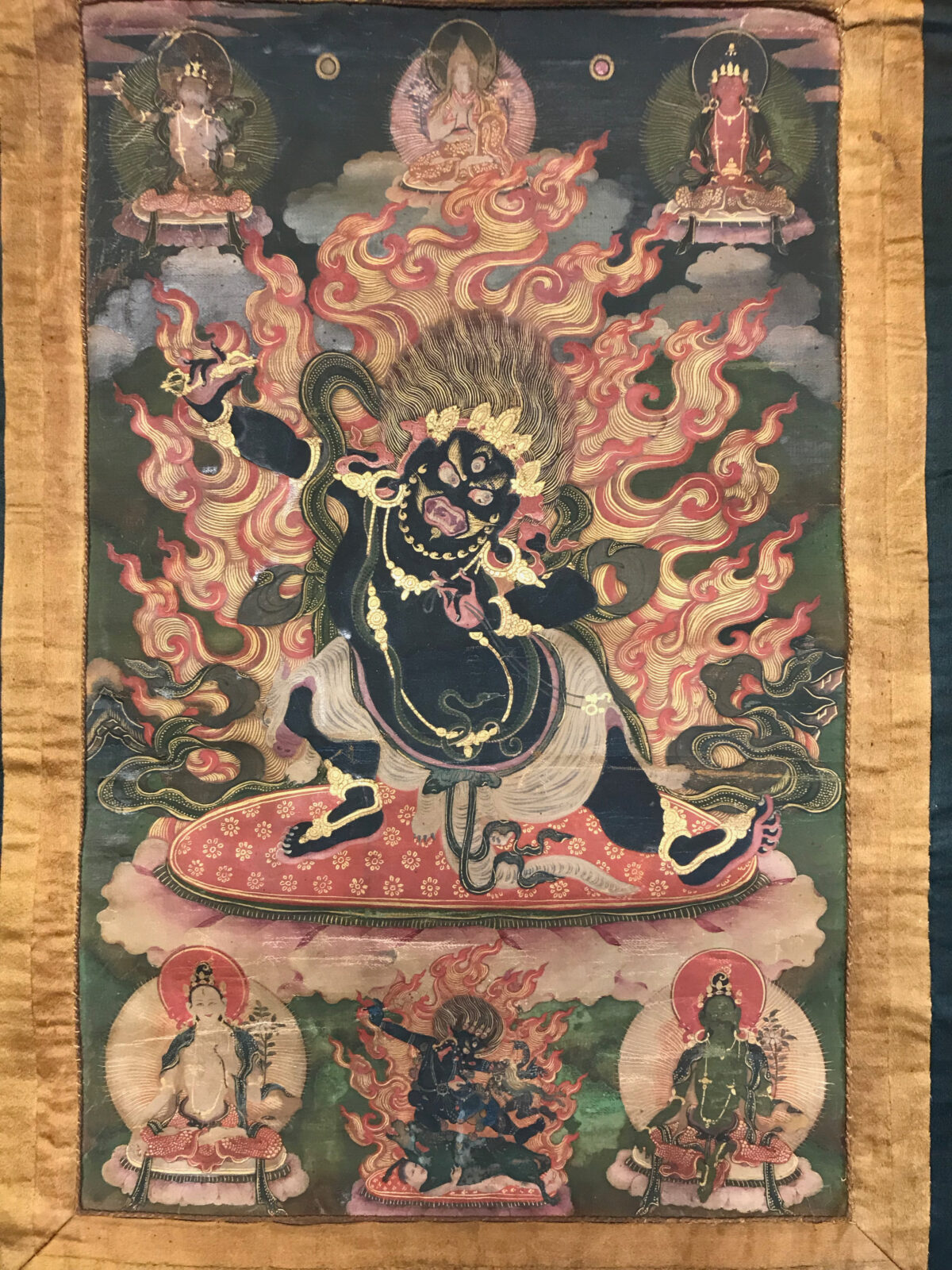
Transmitted light (a light source placed behind an artwork, so light shines through it) shows that the cotton cloth support has areas of weakness in the weave, and small splits are forming. The ground and paint layers are damaged in areas where the support is damaged. Many thangka exhibit this fragility due to rolling and unrolling and being rolled in storage.
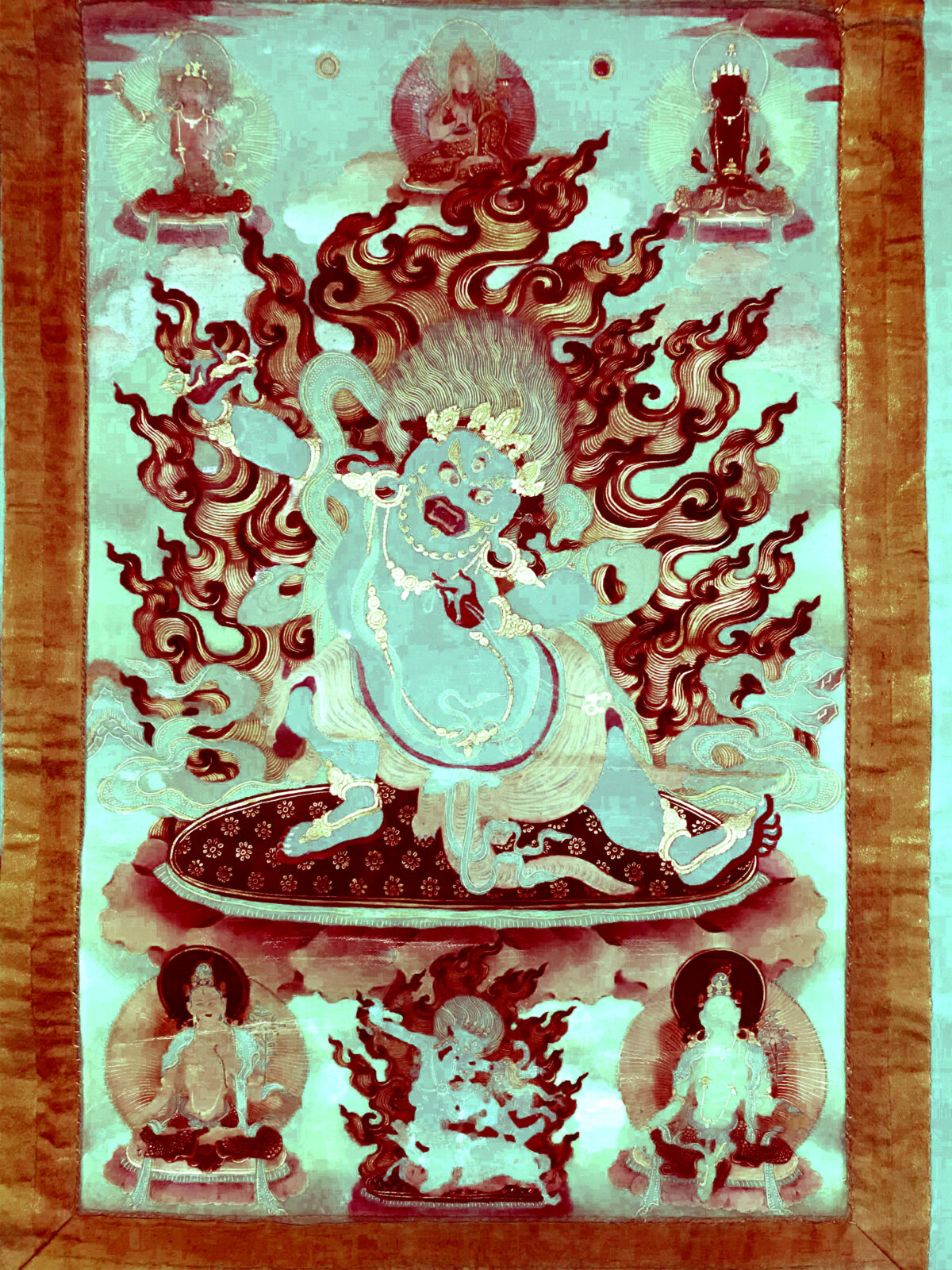
Post-capture image enhancement reveals pigments and the condition of paint layers that may not be visible to the eye. This technique works with digital images, so there is no need to expose a thangka to additional light sources. I use an app on my phone to implement a decorrelation stretch.
Traditional artists used methods and materials that served the unstated goal of ensuring the longevity of their creations. The painting and its textile mounting were meant to survive repeated rolling and unrolling, regular travel on the backs of livestock, display in stone monasteries that endured annual monsoon rains, earthquakes, fires, floods, and political change. Over the course of a thangka’s life, the mountings would be replaced when the damaged textile could no longer support the painting. In the face of such vicissitudes, the paintings were intended to embody the iconography of a specific sacred principle as well as hold the spiritual influence and power with which they had been imbued.
Today when traditionally trained artists create commercially popular contemporary Buddhist art, they often address impermanence directly or referentially in their choice of iconography, methods, and materials. As this innovative, personal style has emerged, I have asked such artists how they wrestle with the impermanence of their work. How do they reconcile the creation of new art with the doctrine of impermanence that lies at the core of the Buddha’s teaching?
Some consciously choose to use nontraditional materials with a relatively short lifespan to convey spiritual, artistic, and political statements. Examples include art installations made of earth, mixed media with digital video, melted PVC plastic, burned paper, and more. Yet one artist said that if he could use paint prepared by traditional apprentices using cooked and filtered yak hide glue and mineral pigments, his paintings would last for hundreds of years. The paints available to him now, he suspects, will crack, peel, and fade in sixty years or less. The impermanence of contemporary creations troubles him deeply.
Some traditionally trained thangka painters and Buddhist devotees now use digital media to make purely “digital thangka” combined with other materials. Looking ahead, the challenges in conserving these developing art forms will be formidable.
In the cultures of origin, sacred artifacts have not been restored to the level of cosmetic perfection that we find today in art dealers’ showrooms. As modern and usually Western restorers travel through the Buddhist diaspora teaching nontraditional methods of cleaning and repainting, something odd is happening, something at variance with the deep convictions of the older traditions, something that appears to be an attempt to perfect the surface of a work of art.
In nearly fifty years of work and research in the monasteries of Asia, I have occasionally seen a thangka bearing a patch or brocade replacement, but I have never seen severe “cleaning” or painting over the original. From the advice of Buddhist teachers I have interviewed and from years of hands-on conservation experience, I have learned that stabilizing fragility in a painting or a textile mounting—rather than invasive, irreversible cosmetic extremes—is in accordance with the wishes of most monastic institutions and museums. Otherwise such objects might be too fragile to be used ceremonially or displayed on museum walls.
For monasteries, museums, and collectors, preventing damage every day with safer storage, display, and handling, as well as with risk assessment and disaster planning for the future, are crucial. A clear understanding of custodial impermanence is also essential.
This leaves us to ponder the profound impact of the impermanence that Buddhist tradition takes as its point of departure, particularly in light of the prevalent outlook of art conservation to protect and preserve the original to whatever degree is possible. For Buddhists, impermanence is fundamental, and for all of us change is inevitable, even in the life of a treasured thangka.
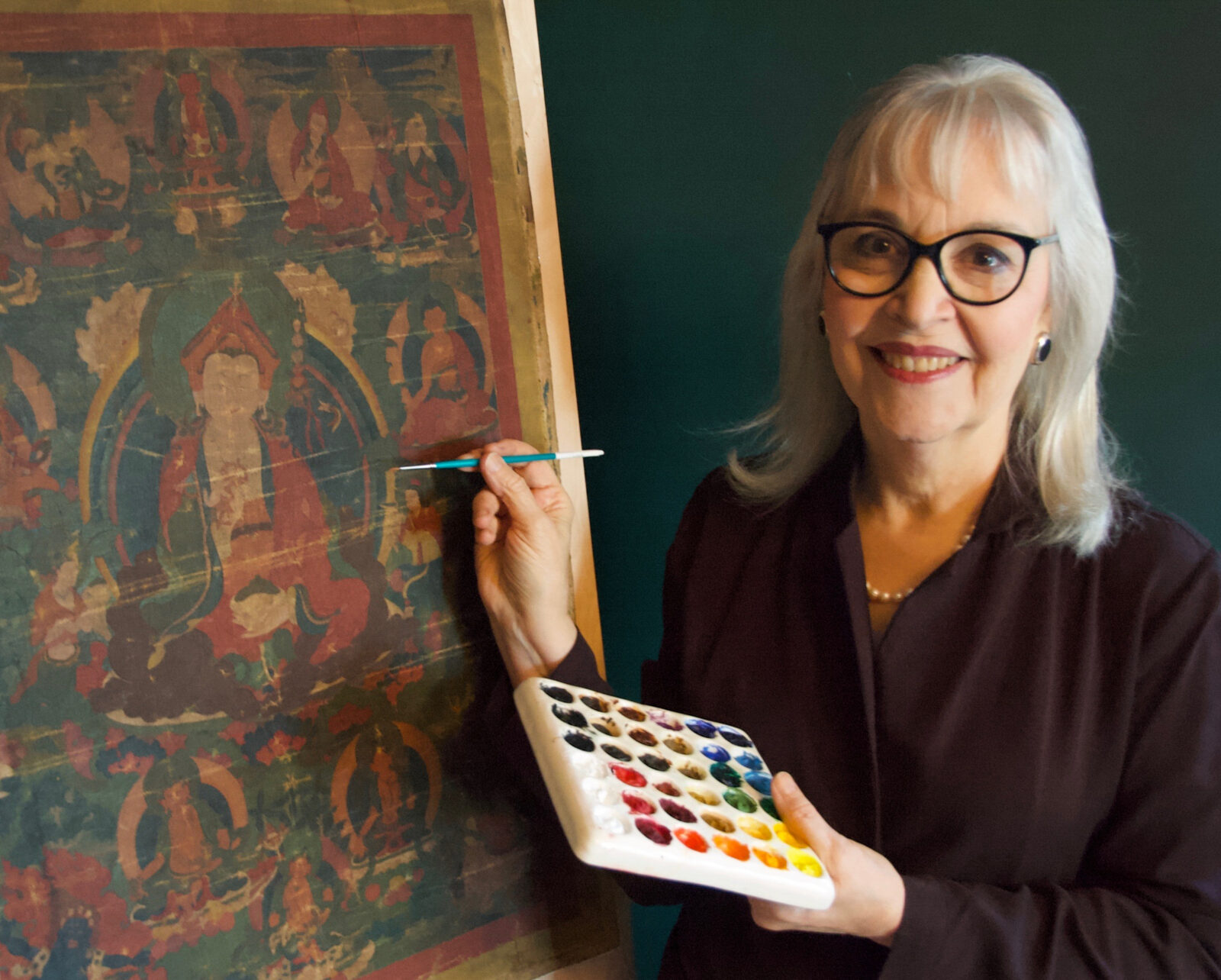
Photograph of Ann Shaftel by Erica Allanach

Ann Shaftel is at the forefront of thangka conservation worldwide. Since 1970 she has worked in the conservation of Buddhist art for museums, monasteries, universities, dharma centers, and private clients, including the Rubin Museum, American Museum of Natural History, UNESCO, and the governments of India and Bhutan. Shaftel’s international work in Treasure Caretaker Training won the prestigious Digital Empowerment Foundation’s Chairman’s Choice Award. She has published widely on thangka scientific research and conservation methods.
Get the latest news and stories from the Rubin, plus occasional information on how to support our work.